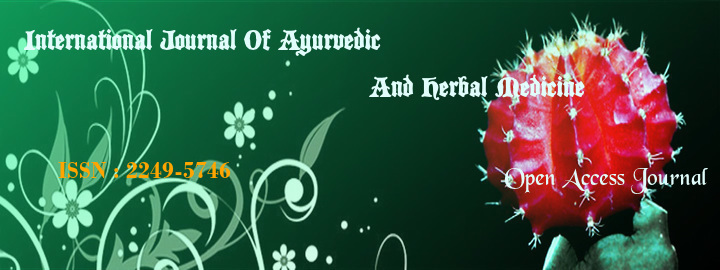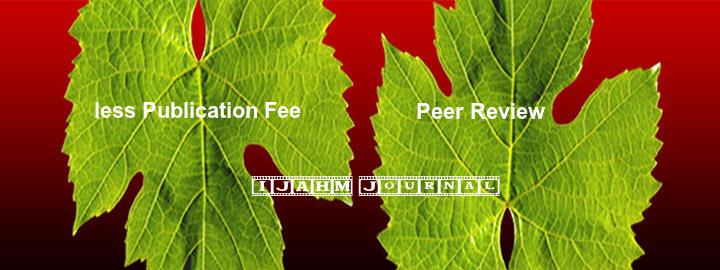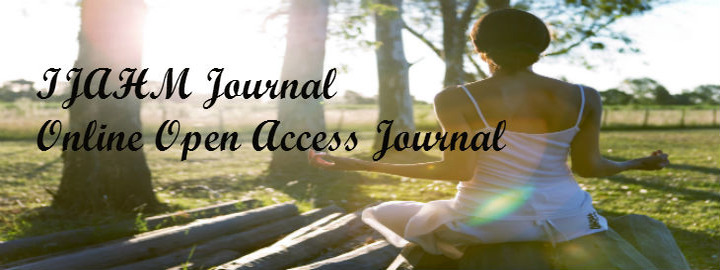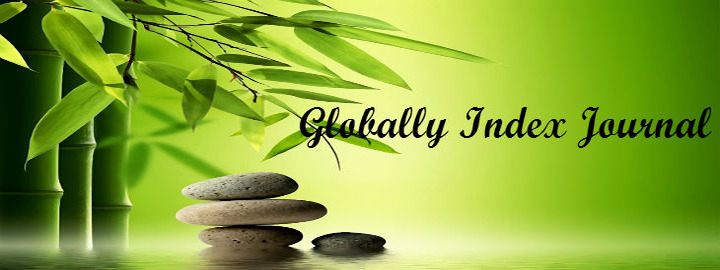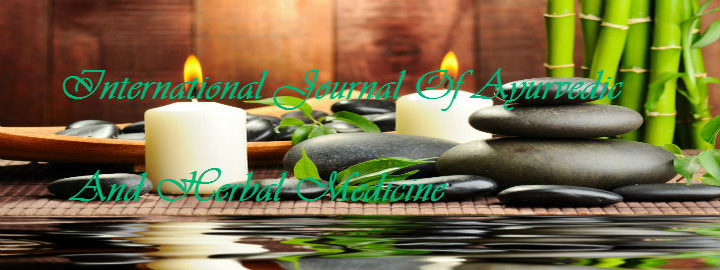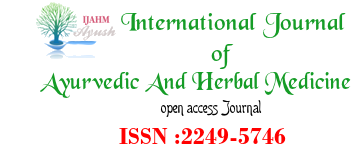


1Usha K S, 2Gurdip Singh
DOI : http://dx.doi.org/10.31142/ijahm/v10i5.04
1Professor,Department of SwasthaVritta and Yoga SDM Institute of Ayurveda and Hospital, Bengaluru 560074,Karnataka, India
2Director, PG and PhD Studies, SDM College of Ayurveda and Hospital,BMRoad, TanniruHalla, Hassan 573201, Karnataka, India
ABSTRACT
In the new found theory of neurological and cardiac pathology, scientists have been able to make a connection between the two. A neurological disorder may possess cardiac manifestation and vice versa. A look at the classics where the SanjnaVahasrotas(pathway of consciousness) has been mentioned in the context of some disorders like Apasmara(epilepsy)becomes more relevant.The Rajas (excitatory) and Tamas(inhibitory)Doshas(vitiations of mind) explained in the context of vitiations of Manas (mental faculty) and its seat as Hridaya (heart) needs to be seen in a new light. The neurotransmitters which are excitatory or inhibitory in action have different effect on the function of the heart. In addition, the sympathetic and parasympathetic nerve supply to the brain and heart also have significant impact. The blood supply from the heart to the brain is also of importance in many morbid conditions of the heart and that of the brain. The electromagnetic field of heart also has significant impact on brain.Hence the cumulative effect of neuro transmitters, nerve supply circulation and electromagnetic field manifests in changed emotions, status of mind and consciousness in an individual.
Key Words: Sanjna VahaSrotas, Rajas,Tamas, Chetas, Neuro transmitters, sympathetic and parasympathetic nerve supply, electromagnetic field
References:
- Vidyadhar Shukla, Ravidutt Tripathi, Charaka Samhita of Agnivesha, Charaka, Dridhabala, Vaidya Manorama commentary, Chaukhambha Sanskrit Pratishthan, Delhi. ShareeraSthana 4, Verse 36, Pg no.735 Reprint:2006
- Harish Chandra Singh Kushwaha, Charaka Samhita of Agnivesha, charaka, Dridhabala, Chaukhambha Orientalia, Varanasi, Reprint:2012 ISBN-978-81-7637-149-0, Sutra Sthana 8, verse 16, pg no.128
- Harish Chandra Singh Kushwaha, Charaka Samhita of Agnivesha, charaka, Dridhabala, Chaukhambha Orientalia, Varanasi, Reprint:2012 ISBN-978-81-7637-149-0, Sutra Sthana 24 verses 25-29 pg no 336
- Bhan Pratap Tadav& H H Awasthi, Concept of Manas- Vikar with special reference to Hridaya IAMJ: Vol.3, Issue3; March-2015, ISSN: 23205091
- Jadavjitrikamji, Narayan Ram Sushruta Samhita of Sushruta, Dalhana, Chaukhambhaorientalia, Varanasi, ISBN:978-81-7637-162-9 reprint:2014, Uttara Tantra 7, verses 1-4, pg no 802
- Harish Chandra Singh Kushwaha, Charaka Samhita of Agnivesha, charaka, Dridhabala, Chaukhambha Orientalia, Varanasi, Reprint:2012 ISBN-978-81-7637-149-0, Sutra Sthana 24, verses 25-29 pg no.336
- Arun et al. a critical analysis of the role of RaktaVahaSrotomula in RaktaDushti- essential hypertension, WJPR, Vol 8, Issue 13, 511-516, ISSN 2277-7105
- inflibnet.ac.in/bitstream/10603/148-781/6/06_chapter%201.pdf last accessed 29/9/20.
- Rakshit R Hombal& Subhash Chandra Bose M. Ayurvedic understanding of insomnia- A Review, IAMJ, July 2017, Vol 5, Issue 7, ISSN: 23205091
- Pokharel and Sharma. Efficacy of Insomnia tab and Shirodhara in Anidra (insomnia), AYU Jan – Mar 2010, Vol 31, Issue 1
- https:// ch.1 – Heart- Brain communication, heartmath.org/research/ science- of -the heart/heart- brain communication
- Lodish et al. Molecular cell biology. 4th edition 2000. https:// ncbi.nih.gov/books/ NBx21475/last accessed 29/9/20
- Wiens B L, Brownell P H. Neurotransmitters regulation of the heart in the nudibranch Archidoris montereyensis. J Neurophysiol. 1995 Oct; 74 (4): 1639-51. Doi: 10.1152/jn.1995.74.4.1639.PMID:8989400
- Hirosh Ando et al. Neuronal and neurohormonal control of the heart in the stomatopod crustacean, Squilla oratoria, Journal of Experimental Biology. 2004207;4663-4677;doi.10.1242/jeb.01272
- M J Brown et al. Catecholamine transmitters and the heart. Acta Med ScandSuppl, 1982; 660:343-9. Doi:10.1111/j.0954-6820.1982tb 00358.x
- Neil Huring et al. autonomic control of the heart: going beyond the classical neurotransmitters. Experimental physiology- oct 2014. Doi:10.113/exp physiol.2014.080184. https://www.research gate.net/publication/267048288- last accessed 29/9/20
- Lumen learning. Com/boundless- ap/ chapter/ neuro- transmitters and receptors
- Richard E Klabunde, Autonomic innervationof the heart and vasculature 1998-2020
- https://heartmath.org/research/science-of-the-heart/energetic- communication/
- Dae-Keunkim et al. Dynamic correlations between heart and brain rhythm during Autogenic meditation. Front Hum Neuro Sci: 2013; 7:414 last accessed 7/10/20
- Mark E Wagshul et al. The pulsating brain. A review of experimental and clinical studies of intra cranial pulsatility. Fluid Barriers CNS 2011;8:5
- int? substance_abuse/terminology/acute_intox/en last accessed 9/10/20
- wikipedia.org/wiki/coma last accessed9/10/20
- DashamoolaTailaDhara and JalaDhara in management of insomnia, IJAMS, Jan – April 2016, Vol 1 Issue 1, ISSN 2455- 6246
index







